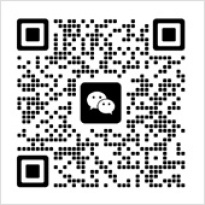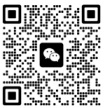24-hour online consultation
|
|
The causes of roller bearing rattling and detection and processing methodsCylindrical roller bearing if in good continuous rotation state will issue a low whine or humming sound. If a sharp hiss, squeak and other irregular sound, often indicates that the bearing is in bad continuous rotation condition, sharp squeak noise may be due to improper lubrication caused by, improper bearing clearance will also cause metal sound. Dents in the bearing outer raceway can cause vibration and result in a smooth, crisp sound. If there is an intermittent noise, this indicates that the rolling element may be damaged. This sound occurs when the damaged surface is rolled over and if there are contaminants in the bearing it will cause a hissing sound. Severe bearing damage will produce an irregular and loud noise. If the noise is due to knock marks caused by mounting, the noise will vary with the speed of the bearing. Loud metallic noise Cause 1: Abnormal load, countermeasures: correct fit, study bearing clearance, adjust to load, correct housing shoulder position. Cause 2: Poor mounting, countermeasures: machining accuracy of shaft and housing, improve mounting accuracy, mounting method. Cause 3: Insufficient or unsuitable lubricant, countermeasure: replenish the lubricant, select the appropriate lubricant. Cause 4: Rotating parts have contact, countermeasure: Modify the contact part of the crank seal Regular noise Cause 1: Indentation, rusting or scarring of the rolling surface due to foreign matter, countermeasure: Replace the bearing, clean the parts concerned, improve the sealing device and use clean lubricant. Cause 2: (after steel carburisation) surface deformation, countermeasure: replace the bearing and pay attention to its use. Cause 3: Stripping of the raceway surface. Countermeasure: Replace the bearing. Irregular noise Cause 1: Excessive clearance, countermeasure: study the fit and bearing clearance, modify the preload amount. Cause 2: Foreign body intrusion, countermeasures: study the replacement of bearings, clean the relevant parts, improve the sealing device, use clean lubricant. Cause 3: Spherical injury, stripping, countermeasures: replace the bearing. There are currently two ways to detect abnormal bearing sound. One is based on the acoustic noise detection method, the other is based on vibration detection method. Noise detection method Is in the base noise less than 20db of anechoic environment, the use of high-quality microphones to a certain distance and direction to extract the bearing sound pressure signal, and by a certain analysis method to extract the abnormal sound components, is a direct measurement method of abnormal sound. Vibration detection method This is an indirect method of detecting anomalous sound, and can be divided into qualitative detection and quantitative parameter detection methods. The qualitative detection method is divided into the method of listening to abnormal sound and the method of observing vibration waveforms. The quantitative parameter detection method refers to the measured parameter values related to abnormal sound in the vibration signal of the bearing under test, such as: the peak value of the vibration, the crest factor to evaluate the abnormal sound of the bearing. Measuring instruments for measuring abnormal bearing sound There are many measuring instruments for measuring abnormal bearing sound, for example: BANT-1 bearing abnormal sound monitor from Hangzhou Bearing Testing and Research Centre; S092 bearing vibration (abnormal sound) measuring instrument from Shanghai Bearing Technology Research Institute; S0910-Ⅲ jointly developed by Luoyang Bearing Research Institute and Dalian Bearing Instrument Factory. These bearing measuring instruments can measure the effective value of bearing vibration and can also measure the peak value, peak factor and pulse number etc. which reflect the abnormal sound parameters of bearings. |




